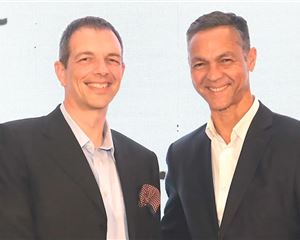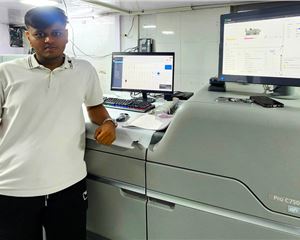Placing IPAMA on the global map
Re-elected, president of IPAMA, KS Khurana, in an exclusive, tells Ramu Ramanathan that his team's global foray is part of a strategy to “revitalise” the print equipment manufacturing in India
09 Oct 2013 | By Ramu Ramanathan
Ramu Ramanathan (RR): At the outset let me congratulate you on your re-election as the president of IPAMA. Is it the same team and what are your plans now?
KS Khurana (KSK): Yes, it is the same team. We were told that the team performed well during the last PrintPack India show, which took place in February 2013 and hence we were asked to continue. I would like to state very humbly that when I took charge as the president, my first address to the team was to convey this message: I need two things, smile on the face of the exhibitors and smile on the face of the visitors.
RR: What is the status of IPAMA’s strategy of alliance with NPES and with your European partners?
KSK: IPAMA is a part of Global Print, an international federation of printing industry members created to further the common interests and mutual understanding of manufacturers of printing, paper-making and converting machinery, equipment and consumables. And so is NPES. During the last PrintPack India show, NPES hosted a conference, which received good response. We are in regular touch with members of countries who are a part of Global Print. During Print ’13, we had a meeting with Global Print members and have put forth our proposal of JVs, sharing of technology and matching partners to start manufacturing in India for products which are not produced in India, but are in demand here.
RR: What are you looking at, technology partnership, or setting up base in India, or knowledge sharing?
KSK: We are looking for technology partnership as well as setting up a base in India. There are print companies in India who still invest in secondhand machines. The point is, they are not getting proper service from the manufacturing company for their machines or parts. What IPAMA is trying to do is speak to these manufacturing companies and ask them to set up a service centre in India with assistance from a matching partner and IPAMA.
RR: What about Asian Print?
KSK: Asian Print is another organisation with members from countries like China, Malaysia, Korea, India, Pakistan, Bangladesh and Sri Lanka. We sit together once in year and discuss on the dates of the shows and ensure our events do not clash with each other. In countries like Sri Lanka, companies willing to set up centres, IPAMA offers them newer machineries to keep in their centres.
RR: Is it a possibility that India becomes a hub for small parts, backend support for foundries, as most of the foundries are shutting down in Europe, and with the Automobile industry is that India has taken lead in manufacturing small tiny parts.
KSK: Yes we are exploring the possibility in all the corners; in the foundries, automobile sectors and spare parts. What I am suggesting to my members of IPAMA is to come forward with some new machines, join hands in collaborations.
RR: In what way?
KSK: In many ways. For example, if we are not able to manufacture digital machines or Heidelberg-type machines in India, it does not matter. Because there are hundreds of machines available in the world, which Indian manufacturers can make and satisfy the needs of the Indian market. If you look at digital printers, if the run quantity is only hundred copies in a day, the semi automatic machines also solve the purpose. But maintaining quality is very important, which is why, IPAMA is trying to conduct seminars and create awareness among our members.
RR: IPAMA’s partnership in Sharjah. Is it a long-term plan or only for 2014?
KSK: It’s a long-term plan signed by IPAMA for 20 years. Our next show is scheduled in April 2014. The Asian Print members will travel to Sharjah/India, see how we are working for the industry. Our motive is to have a gateway for the Middle East companies, Africa and Pakistan. Most of the companies in Africa and Pakistan are buying machines from Dubai. What we hope for is to explore the markets in Dubai through this partnership. Also the transportation is not that difficult.
RR: How big will the show in Sharjah? Will it be comparable to Printpack 12-13?
KSK: We are trying our best. We have a good number of enquiries. People are interested. That said, it’s too early to say anything, we still need one or two more months to mobilise things.
RR: Other aspect of IPAMA is the government-based initiatives, business to business developments and bringing some customers to India directly on a B2B basis. What’s the objective behind this.
KSK: We took a delegation to Drupa last year, which was supported by the government. Some of our members received support for participating in PrintPack India, which was subsidised by NSIC. We are now planning to invite a delegation of buyers from other countries to visit our show. We hope to receive funds support travel cost of the delegation. The objective is: to encourage our members, to visit and explore the possibility of creating new technology machines in India.
RR: What is IPAMA concentrating on for their Sharjah show?
KSK: We are planning to visit every country in the Middle East for the visitor promotions. The Chamber of Commerce in Sharjah has assured a meeting with the printers in the Middle East and IPAMA will share what machines are manufactured in India because most of the people there don’t prefer to come here but they go to the European market.
RR: Specific initiative other than exhibitions and trade shows?
KSK: We are currently focussing on encouraging our members on forming joint ventures. We are encouraging our members to work on manufacturing machines that are not manufactured in India. We are also planning to set up a panel of engineers to assist our manufacturing requirements. They may be hydraulic or mechanical or and field of engineering. This IPAMA subsidised panel will help the members and other manufacturers to take assistance or consultation regarding any technical issues with machine manufacturing.
RR: Like you have Faridabad which has the highest production and to some extent Coimbatore, which are the other hubs that have active participation with IPAMA.
KSK: After Faridabad, it is Amritsar. The hub at Amritsar manufactures corrugated box making machines, die-cutting machines, paper cutting machines and small machines for perforation work. Around 125 die-cutting machines a month are produced which alone is 80% of India’s total production. Ahmedabad in Gujarat is doing well, Coimbatore has around eight players, which again is doing good. Trivandrum is doing very well, Karnataka is also quite strong.
RR: What steps has IPAMA taken in terms of the question of imported machineries?
KSK: The role of IPAMA is clear; we don’t say don’t buy. We have to produce quality in India. Whichever technology is not available in India, you can definitely import it because you have to produce a good quality product. But if a machine technology, which is comparable with the kit produced overseas, we should try and use it instead of going for a secondhand or a thirdhand imported equipment. Herein, I request the printer to help the manufacturer to build the machines with the local resources.
RR: What are the machines which Five Star Printing Machinery is manufacturing ?
KSK: Five Star Printing Machinery was started in 1981. Since then, we have specialised in manufacturing of paper-cutting machines and Die cutting Machines. from last five years we are manufacturing foil printing attachments. In the binding sector, we manufacture board cutters. There is the Slitting machines for the Spine Cutter is a special equipment in Binding hardcover books, plus multi-purpose punching machine for spiral, wiro, spico, etc.
RR: What is happening with Five Star Printing Machinery, now?
KSK: Currently we are making paper-cutting machines and die-cutting machines. we now have started a new unit for manufacturing six head, plus double head saddle-stitching machines with automatic folding systems. Automatic and semi-automatic creasing perforation and half-cutting machine. We are now working on a new machine, which we hope to introduce Print Pack Arabia 2014.
RR: Where do you see the book and publication industry evolve?
KSK: Not only in publication, but there is demand in stationeries especially notebooks. So many companies in India are exporting huge amount of notebooks to other countries. This along with the book and publication are booming segments, and the future hold good potential.
RR: How much of your percentage are you exporting?
KSK: It is 15% to 20% currently. We hope to boost our exports by at least 10% post Print Pack Arabia 2014.















 See All
See All